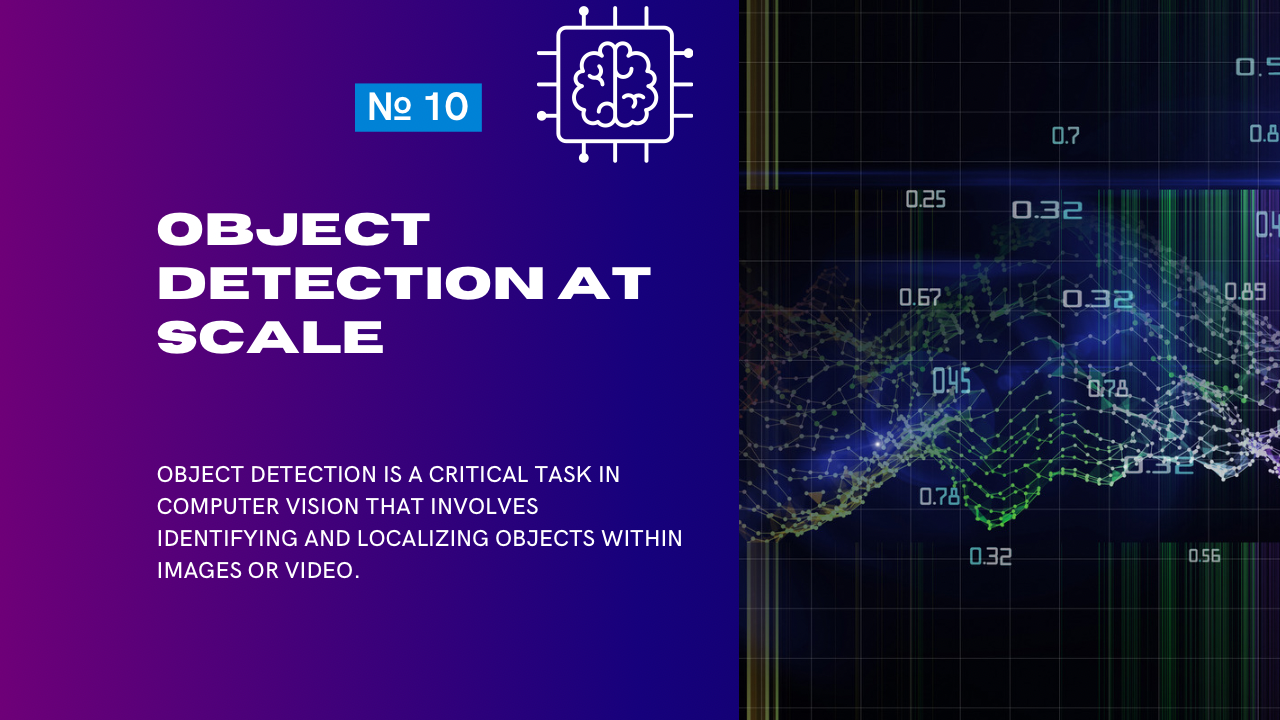Object detection is a critical task in computer vision that involves identifying and localizing objects within images or video. When it comes to scaling object detection models for production, three prominent frameworks are frequently discussed: YOLOv7, Detectron2, and MMDetection. This comparison explores their architectures, strengths, weaknesses, and use cases.
Overview of Frameworks
| Framework | Description | Best Use Cases |
|---|---|---|
| YOLOv7 | A state-of-the-art real-time object detection model optimized for speed and accuracy. | Real-time applications like surveillance, drones, and robotics. |
| Detectron2 | A modular, PyTorch-based library developed by Facebook AI for training and deploying object detection models. | Research and production tasks requiring flexibility and customization. |
| MMDetection | An open-source toolbox built on PyTorch, part of the OpenMMLab ecosystem, supporting a wide variety of models. | Scalable applications requiring extensive model support and modularity. |
Key Features Comparison
| Feature | YOLOv7 | Detectron2 | MMDetection |
|---|---|---|---|
| Speed | Extremely fast, optimized for real-time tasks. | Moderate, depends on the model architecture. | Flexible but generally slower than YOLO for real-time. |
| Accuracy | High accuracy, especially for medium-scale datasets. | State-of-the-art accuracy for custom models. | Competitive accuracy across supported models. |
| Ease of Use | Simple to implement, minimal configuration. | Moderate, requires understanding the library’s modular design. | Moderate, but documentation simplifies setup. |
| Model Variety | Limited to YOLO family. | Wide variety of pre-trained models (e.g., Faster R-CNN, Mask R-CNN). | Extensive, includes many detection models like Cascade R-CNN, SSD. |
| Customization | Limited customization for architectures. | Highly customizable for research. | Highly modular, ideal for advanced configurations. |
| Community Support | Strong, large community and resources. | Strong, with active contributions from Facebook AI. | Active, part of the broader OpenMMLab ecosystem. |
| Hardware Requirements | Lightweight, performs well on lower-end GPUs. | Requires higher computational power for complex models. | Scalable for high-performance clusters. |
Performance Comparison
| Metric | YOLOv7 | Detectron2 | MMDetection |
|---|---|---|---|
| Inference Speed (FPS) | ~150 FPS on an RTX 3090 | ~30 FPS (Faster R-CNN) | ~35 FPS (RetinaNet) |
| Accuracy (mAP) | ~56% (COCO dataset) | ~58–60% (COCO) | ~57–60% (COCO) |
| Model Size | Compact (few MBs) | Larger (~200–500 MB) | Varies by model |
| Scalability | High for edge devices | Moderate | High for large-scale clusters |
Strengths and Weaknesses
YOLOv7
Strengths:
- Lightning-fast inference speeds, suitable for real-time use cases.
- Compact model size makes it ideal for edge and mobile devices.
- Easy to implement and deploy with pre-trained weights.
Weaknesses:
- Limited flexibility for custom model modifications.
- May struggle with small or highly complex objects in dense scenes.
Detectron2
Strengths:
- Highly modular and flexible, supporting a range of architectures (e.g., Mask R-CNN, Faster R-CNN).
- Excellent for research and fine-tuning on custom datasets.
- Built-in support for segmentation, keypoint detection, and more.
Weaknesses:
- Slower inference speeds compared to YOLO.
- Requires higher computational resources.
MMDetection
Strengths:
- Extensive support for a variety of detection models and configurations.
- Modular design, making it easy to adapt and scale for different tasks.
- Strong ecosystem with OpenMMLab tools like MMCV for pipeline optimization.
Weaknesses:
- Slightly steeper learning curve compared to YOLO.
- Inference speeds depend heavily on the chosen architecture.
Best Use Cases
| Framework | Use Case |
|---|---|
| YOLOv7 | Real-time video analytics, drone-based object tracking, and edge computing tasks. |
| Detectron2 | Research-oriented projects, applications requiring advanced customization, and segmentation tasks. |
| MMDetection | Large-scale enterprise deployments, projects needing diverse model support and pipeline integration. |
Example Application Scenarios
1. Real-Time Traffic Monitoring (YOLOv7)
- Why YOLOv7?
- High inference speed makes it suitable for real-time vehicle detection and classification on roadside cameras.
- Challenges:
- Limited flexibility to handle edge cases like occlusions or low-light conditions.
2. Medical Imaging Research (Detectron2)
- Why Detectron2?
- Supports segmentation and fine-grained custom models, ideal for tumor or organ detection.
- Challenges:
- Requires significant computational power for training and inference.
3. Retail Store Analytics (MMDetection)
- Why MMDetection?
- Wide variety of pre-trained models allows adapting detection systems to different environments and objects.
- Challenges:
- Initial setup and configuration can take time due to the modular nature of the framework.
Conclusion
The choice of object detection framework depends heavily on the application requirements:
- Use YOLOv7 for speed-critical tasks and edge deployments.
- Opt for Detectron2 when flexibility, customization, or research is the priority.
- Choose MMDetection for scalable projects requiring extensive model support and enterprise-grade solutions.
